NetUP SystemOS
What is the basis of firmware and why is it cool?
Many of our IPTV products are what you would call a "regular" software, which can be potentially built and installed on any operating system. We, however, have faced plenty of problems even at the initial stages of their distribution, which made us reconsider the way software is delivered and installed.
The thing is that the software does not work by itself, but rather in a certain environment. This environment is formed by OS, DBMS, web server and many other components. The situation is complicated by the presence of solutions that are tied to certain hardware. In addition, it turned out some of our customers didn't have system administrators versed in digital television, which was a surprise to us. After all, as during the implementation of the UTM5, a billing system for ISPs, we have never encountered anything like that, since every telecom had to have a competent system administrator. But customers for our IPTV solutions weren't only ISPs: there were also hotels, and ships, whose engineers often had no idea about SSH, and sometimes even lacked Internet access.
The solution came to us quickly - not only to provide customers with the necessary Software, but also a full-fledged firmware for the server, that is, a ready-made image of the file system, that includes everything you need.
This approach allowed to solve several problems at once:
- Easy and fast software installation – you can configure the product remotely, while the client simply needs to provide remote access to the machine, booted from the LiveCD or iLo. This process takes way less time, than installing individual components from Repository or separate distributions manually
- One-click software update – just download the update from the website, upload the file to the device and click "Update" in the management interface
- An optimally configured system in every concrete case.
Over the years, both the system architecture and the GUI have evolved, turning into a full-fledged server management complex.
What are the advantages of our software?
1. IPTV services in the form of hot-swappable modules
Each component works in its own environment (container) and does NOT affect the work of other components, which is important for complex systems, where different functions of the modules can use the same software and slow down the system. Plus, the modular architecture allows hot swapping, i.e. no need to restart the server or stop other modules to update the software, which reduces downtime to 1-2 seconds.
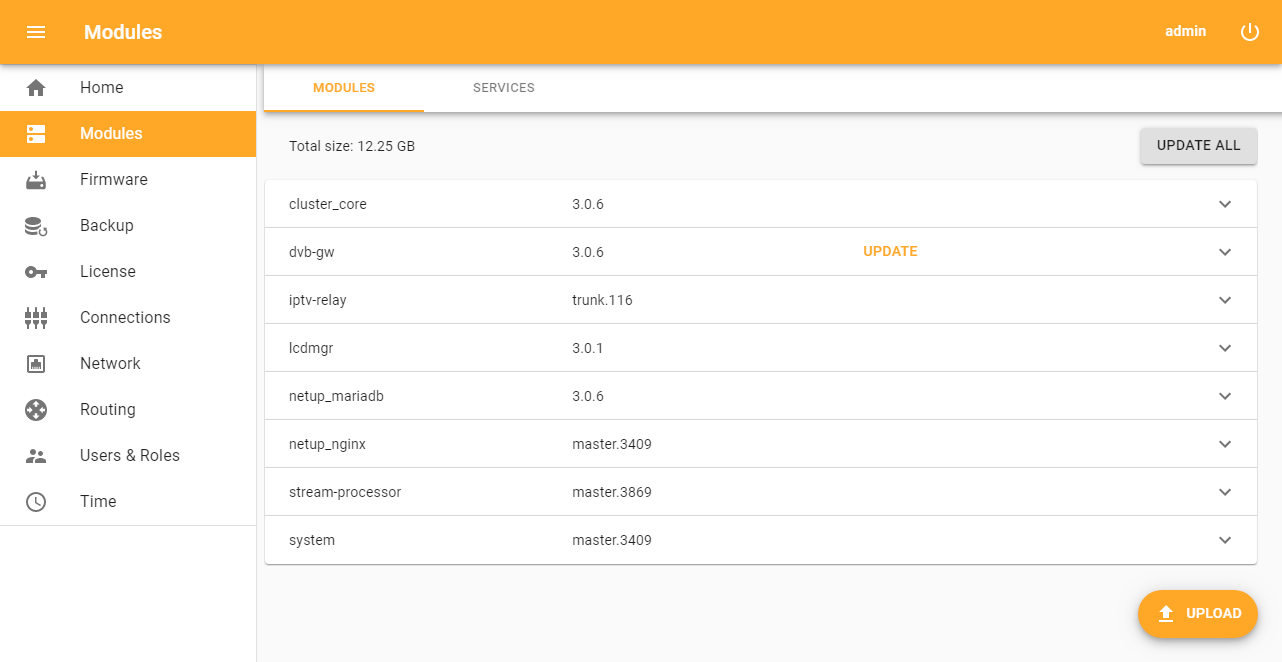
2. Web UI built on canons of Material Design and Mobile First
You can easily control the device both with a PC and your mobile phone.
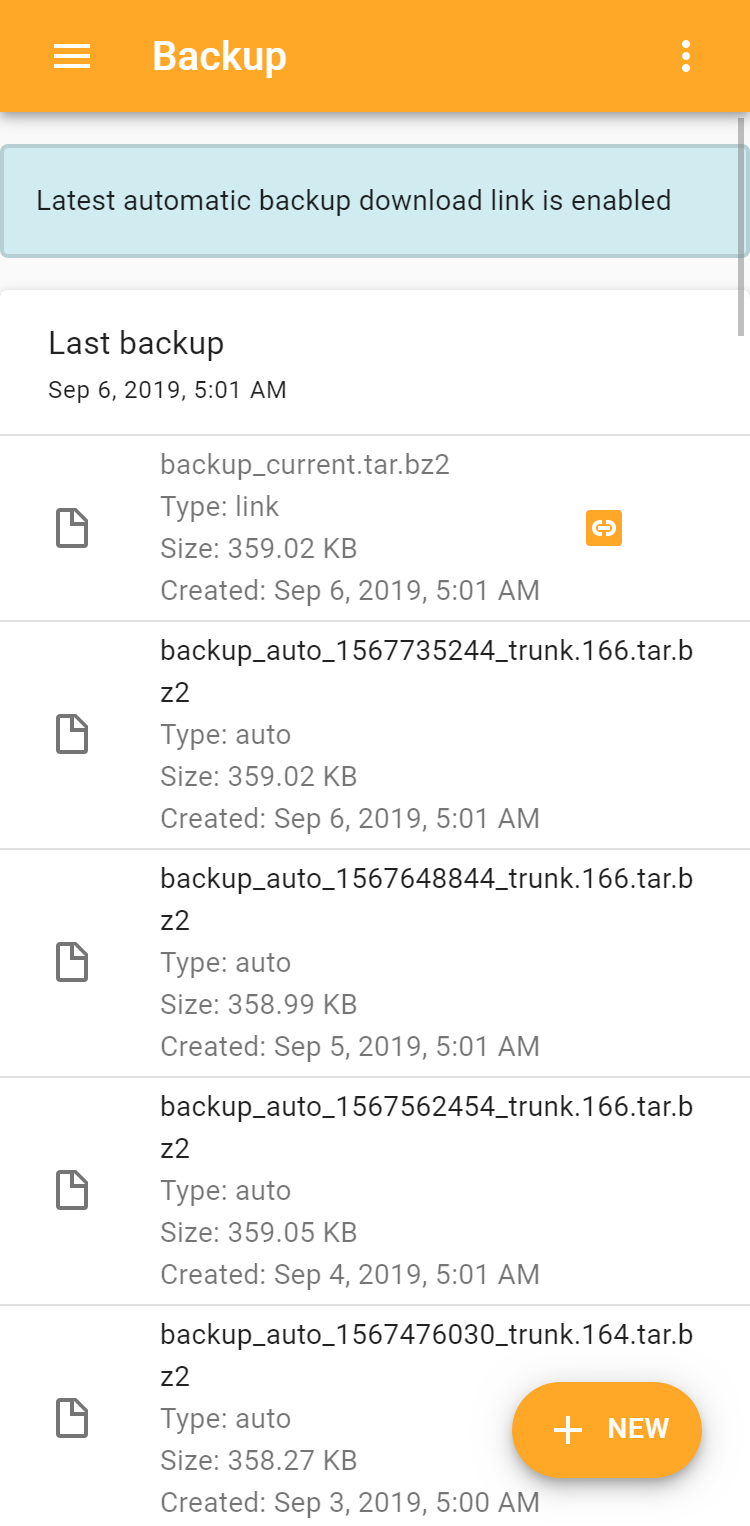
3. Training mode
In addition to the documentation, there is an interactive training system right in the web interface. With it, anyone can quickly understand system’s functions and management methods.
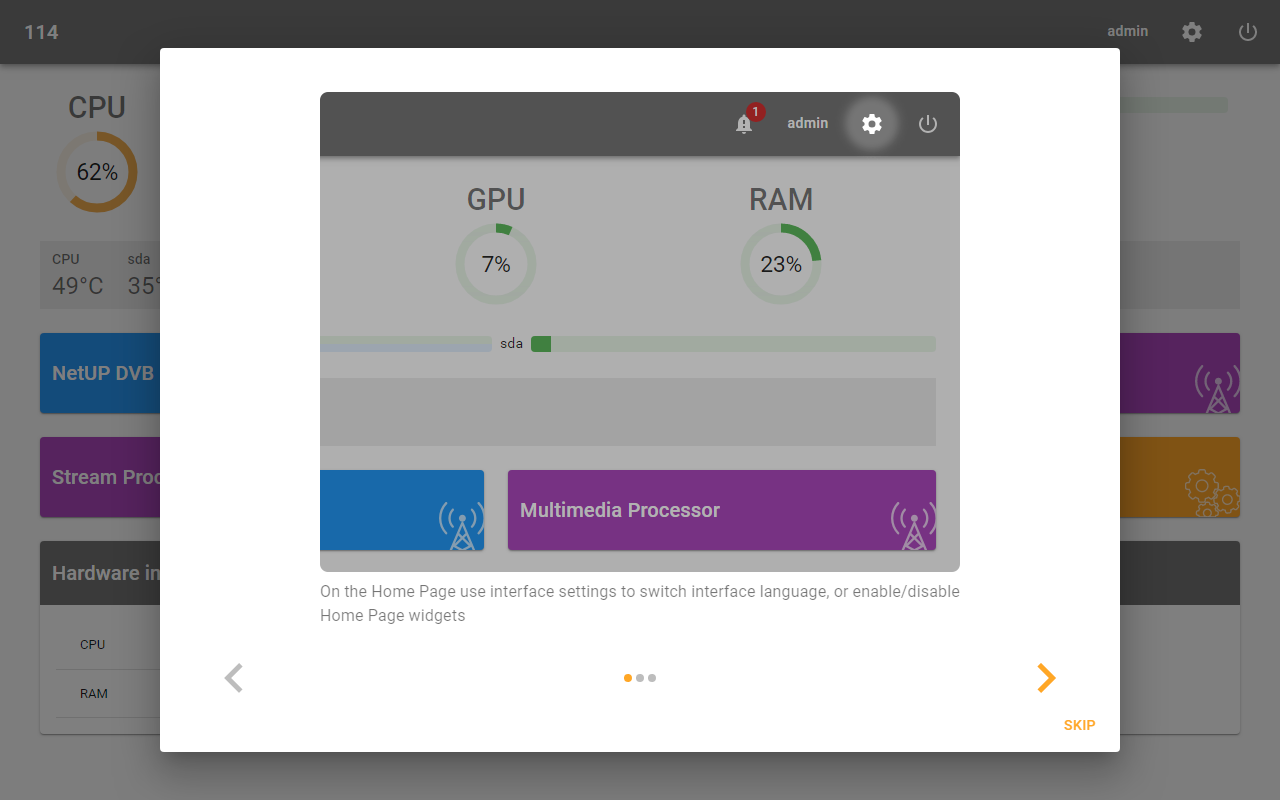
4. System monitoring
Temperature, CPU load, disk space, SMART and many other parameters can be monitored in real-time on the main page of the web interface.

5. Access rights management
Combine the necessary rights in roles and assign them to users.
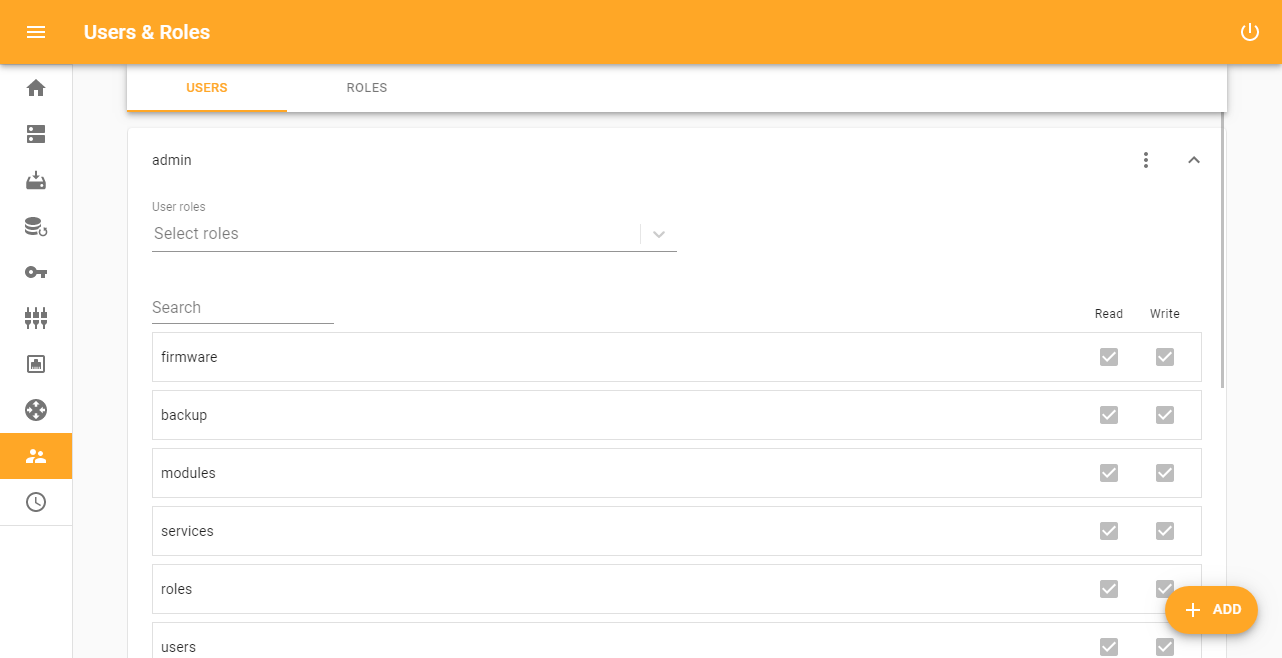
6. Technical Support Access Tunnel
Even extensive experience in project implementation cannot guarantee that everything will go smoothly, therefore we have provided access for diagnostics in one click.
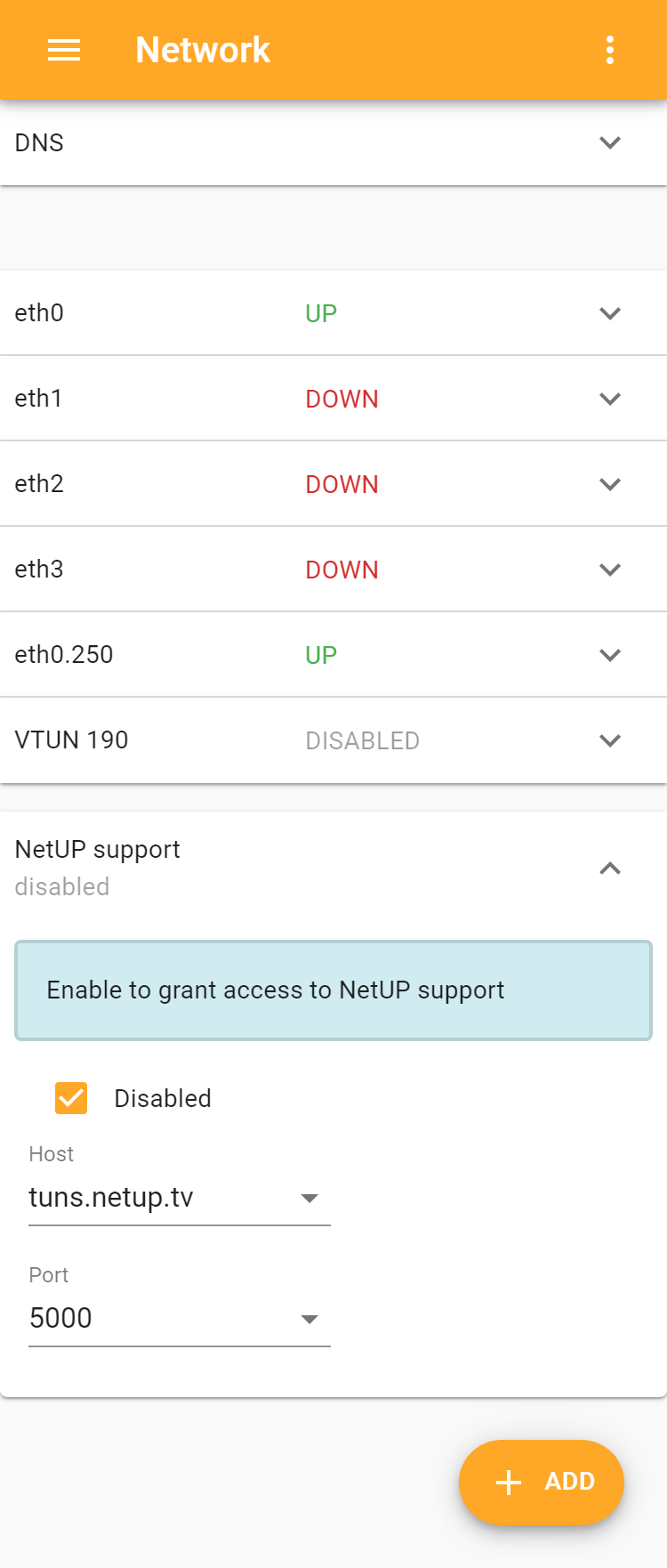
7. Open RESTful API
There is a modern application interface for integration with third-party monitoring and control systems. Through the API, control of all device functions is available.
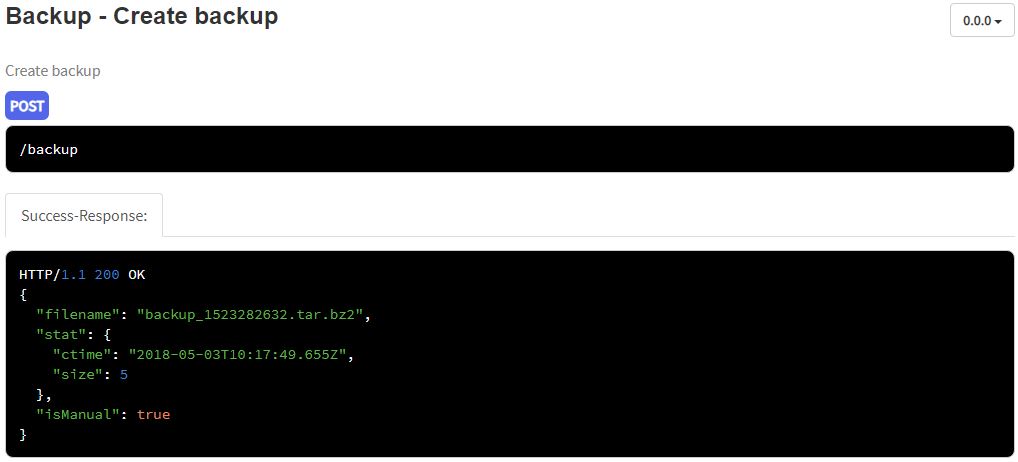
31.10.2019
To other arcticles